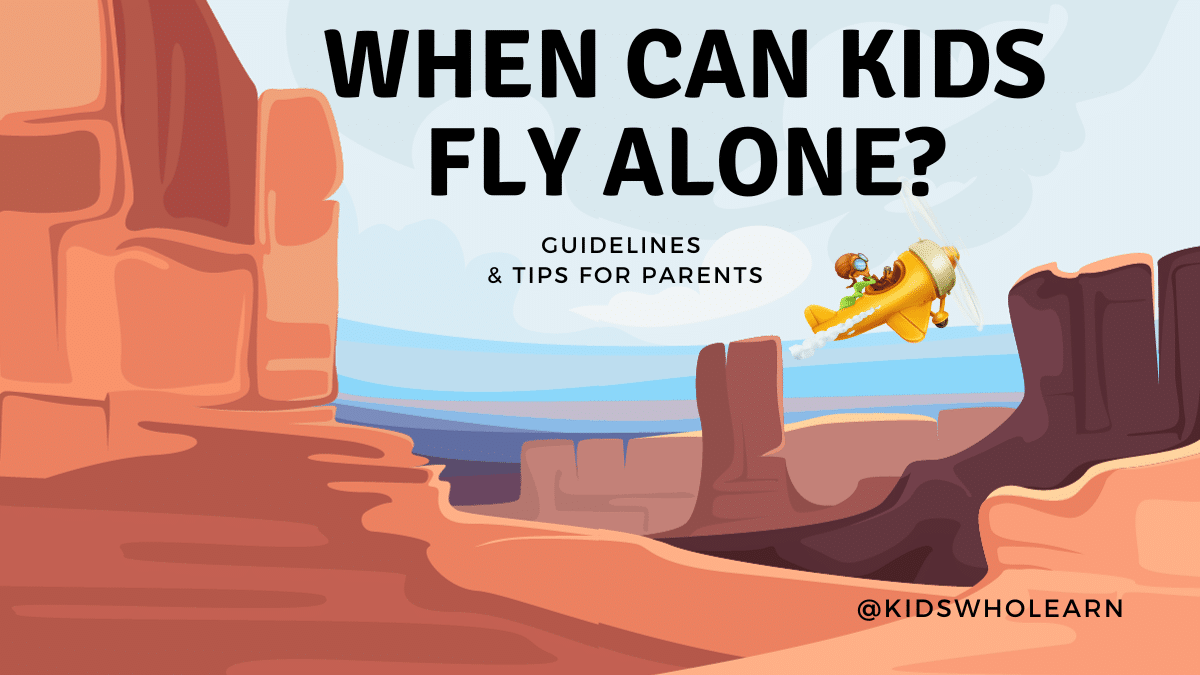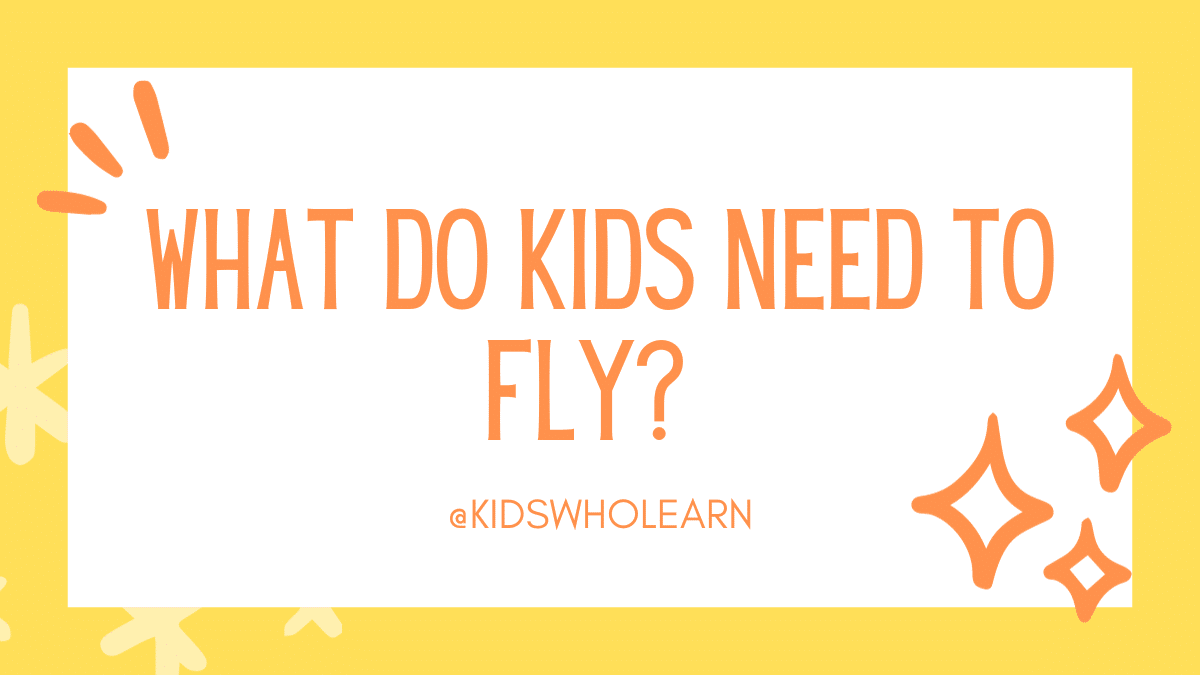If you’re a parent or guardian who’s planning to travel without your child, you might wonder when your kid can fly alone. Airlines have different policies regarding unaccompanied minors, and it’s important to know the rules before booking a flight. Generally, children between the ages of 5 and 11 are considered unaccompanied minors, while those aged 12 and above can travel alone.
However, some airlines may have different age restrictions or requirements for unaccompanied minors. For example, some airlines may require children under 14 to use their unaccompanied minor service, while others may allow children as young as 7 to travel alone with restrictions. It’s essential to check the airline’s policy and requirements before booking a flight for your child.
Traveling alone can be a daunting experience for children, and it’s crucial to ensure their safety and comfort throughout the journey. In the following article, we’ll discuss the age restrictions and requirements for unaccompanied minors, as well as tips for preparing your child for solo travel.
Understanding Age Restrictions
If you’re planning to let your child fly alone, it’s important to understand the age restrictions that airlines have in place to ensure their safety. Here are some things to keep in mind:
Minimum Age Requirements
Most airlines have a minimum age requirement for children traveling alone. This age can vary depending on the airline, so it’s important to check with the airline you’re planning to use. Some airlines may also have different age requirements for domestic and international flights.
Here are some examples of minimum age requirements for children traveling alone on popular airlines:
| Airline | Minimum Age Requirement |
|---|---|
| Delta | 5 years old |
| American Airlines | 5 years old |
| United Airlines | 5 years old for domestic flights, 12 years old for international flights |
| Southwest Airlines | 5 years old |
It’s worth noting that some airlines may require additional documentation, such as a letter of consent from a parent or legal guardian, for children traveling alone.
Teenage Travelers
If your child is a teenager, they may be able to fly alone without any age restrictions. However, some airlines may still have policies in place for teenage travelers.
For example, Delta allows teenagers between the ages of 15 and 17 to travel alone without any additional restrictions. American Airlines has a similar policy for teenagers between the ages of 15 and 17, but requires them to fill out an unaccompanied minor form.
It’s important to check with the airline you’re planning to use to see if they have any specific policies in place for teenage travelers.
Remember, it’s always better to be safe than sorry when it comes to your child’s safety. Make sure you understand the age restrictions and policies of the airline you’re using before letting your child fly alone.
Airline Policies
When it comes to children flying alone, each airline has its own policies and rules. Here are some general guidelines to keep in mind:
Age Restrictions
Most airlines require that children be at least 5 years old to fly alone. However, some airlines may allow children as young as 4 years old to fly alone, while others may require that children be at least 7 years old. Be sure to check with the airline you plan to fly with to confirm their specific age restrictions.
Unaccompanied Minor Fees
Most airlines charge an additional fee for children who are flying alone. These fees can vary greatly depending on the airline and the length of the flight. Be sure to check with the airline you plan to fly with to confirm their unaccompanied minor fee.
Required Forms
Most airlines require that parents or guardians fill out and sign a form before their child can fly alone. This form typically includes information about the child’s flight itinerary, contact information for the parent or guardian, and any special instructions for the airline staff.
Escort Services
Some airlines offer escort services for children who are flying alone. This service typically includes a staff member who will escort the child through security, help them board the plane, and ensure that they are picked up by an authorized adult at their destination.
Connecting Flights
If your child has a connecting flight, be sure to check with the airline to see if they offer connecting flight services for unaccompanied minors. Some airlines may require that a staff member escort the child between flights, while others may allow the child to navigate the airport on their own.
Remember, each airline has its own policies and rules when it comes to children flying alone. Be sure to check with the airline you plan to fly with to confirm their specific requirements and guidelines.
International Travel Considerations
When it comes to international travel, there are additional considerations to keep in mind when deciding whether your child is ready to fly alone.
Passport and Visa Requirements
Before booking your child’s flight, it’s important to ensure that they have all the necessary travel documents. This includes a valid passport and any required visas for the countries they will be visiting.
Make sure to check the expiration date of your child’s passport, as some countries require a certain amount of validity remaining on the passport in order to enter. Additionally, some countries may require a visa for entry, so be sure to research the specific requirements for your destination.
Country-Specific Regulations
Each country has its own regulations and requirements when it comes to minors traveling alone. Some countries may require a consent letter from the child’s parents or legal guardian, while others may require additional documentation or even a chaperone for the child.
It’s important to research the specific regulations for the country your child will be visiting and ensure that all necessary documents and requirements are met before the flight.
Overall, international travel with a child flying alone requires extra attention to detail and preparation. But with proper planning and research, you can ensure a safe and successful trip for your child.
Preparing Your Child for Solo Travel
When your child is flying alone, it is important to prepare them for the experience ahead of time. By taking some simple steps, you can help ensure that your child has a safe and enjoyable trip.
Travel Itinerary
Before your child’s flight, make sure that they understand their travel itinerary. This includes the flight number, departure and arrival times, and any layovers or connecting flights. It’s a good idea to print out a copy of the itinerary for your child to keep with them.
If your child is old enough to have a phone, make sure they have it with them and that they know how to use it. You can also download the airline’s app so that your child can check their flight status and gate information.
Safety Measures
When your child is flying alone, safety should be your top priority. Here are some safety measures to consider:
- Choose a nonstop flight if possible to reduce the risk of your child getting lost or missing a connecting flight.
- Make sure your child has identification with them, such as a passport or driver’s license.
- Pack a small bag with snacks, a water bottle, and any medications your child may need.
- Talk to your child about what to do if they get lost or separated from their belongings.
- Make sure your child knows not to accept help or gifts from strangers.
By taking these steps, you can help ensure that your child is prepared for solo travel and has a safe and enjoyable trip.
On The Day of Travel
Check-In Process
When your child is traveling alone, it is essential to arrive at the airport early. This is because the check-in process can take longer than usual. You will need to provide the airline with all the necessary documentation, including your child’s identification and travel itinerary. You should also inform the airline if your child has any special needs or if they require any assistance during the flight.
To make the check-in process smoother, you can fill out any necessary forms ahead of time. Some airlines also offer online check-in, which can save you time at the airport. You should also ensure that your child has all the necessary items for the flight, including their boarding pass, identification, and any necessary travel documents.
In-Flight Assistance
Most airlines offer in-flight assistance for unaccompanied minors. This can include special seating arrangements, meals, and entertainment options. The flight attendants will also keep an eye on your child throughout the flight and ensure that they are comfortable and safe.
It is important to note that some airlines may charge an additional fee for unaccompanied minors. You should check with your airline ahead of time to see what their policies are and how much it will cost.
Overall, traveling alone can be a daunting experience for children. However, with the right preparation and assistance, it can be a safe and enjoyable experience. By following the necessary steps and guidelines, you can ensure that your child has a smooth and stress-free journey.
Post-Flight Procedures
After your child’s flight, there are a few procedures you should follow to ensure their safety and comfort. Here are some of the things you should do:
Arrival and Pick-Up
When you arrive at the airport to pick up your child, make sure to arrive early. You don’t want to be late and have your child waiting for you. Check the arrival time of your child’s flight and plan accordingly.
When you arrive at the airport, go to the designated pick-up area. This is usually located outside the terminal building. Make sure to bring a valid ID with you, as you will need it to pick up your child.
Once you have picked up your child, take some time to talk to them about their flight. Ask them how they are feeling and if they need anything. If your child is hungry or thirsty, take them to a nearby restaurant or café and buy them something to eat or drink.
If your child has any luggage, make sure to collect it from the baggage claim area. Check to make sure that all of your child’s belongings are there and that nothing is missing.
Once you have collected your child’s luggage, it’s time to head home. Make sure to buckle your child up in the car and drive safely. Your child may be tired from their flight, so make sure to give them some time to rest once you get home.
Remember, flying alone can be a big adventure for kids, but it can also be stressful. Make sure to be patient and understanding with your child, and help them feel comfortable and safe throughout the entire process.







